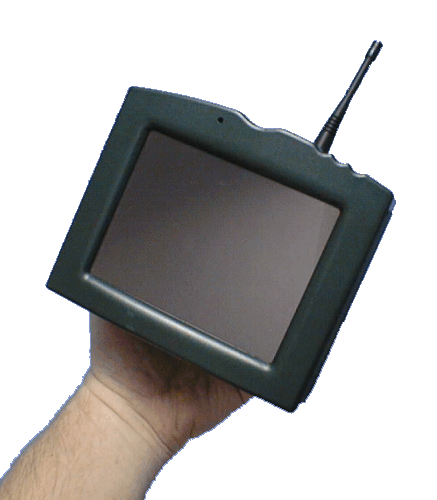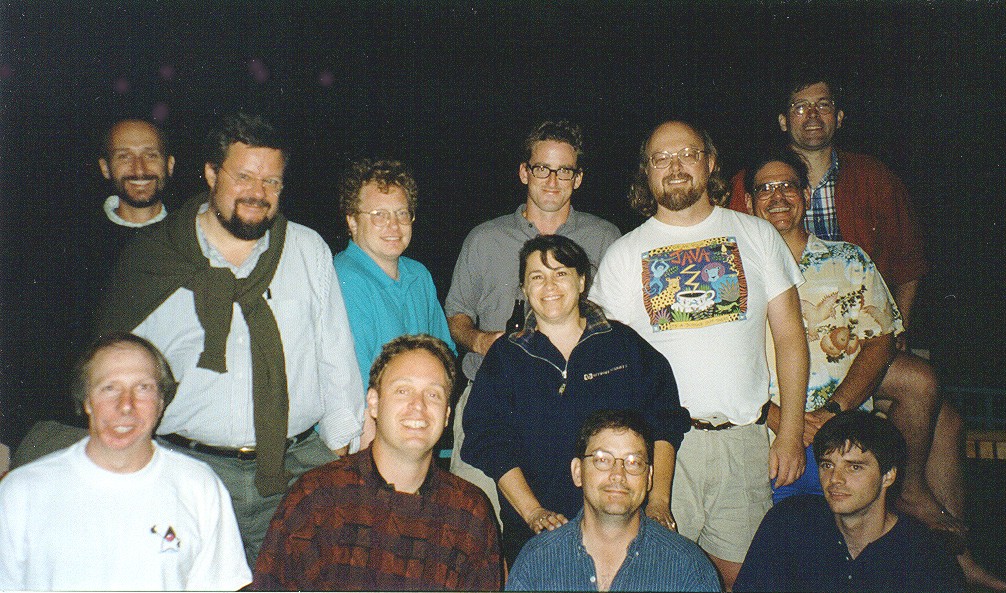
A Brief History of the Green Project
Java, whose original name was Oak, was developed as a part of the Green project at Sun. It was started in December '90 by Patrick Naughton, Mike Sheridan and James Gosling and was chartered to spend time (and money!) trying to figure out what would be the "next wave" of computing and how we might catch it. We quickly came to the conclusion that at least one of the waves was going to be the convergence of digitally controlled consumer devices and computers.From the beginning we did not consider ourselves a research project. All of us were from product groups. We focused on products. Business models and end users were as important to us as technology. We subscribed to what Bill Joy called "Hammer Technology": taking a bunch of existing stuff and hammering it together. Learning by doing. We built things you can hold and use. This is why we chose as deliverables a set of working prototypes and a business plan.
We moved offsite to 2180 Sand Hill Road in April '91 and were joined by Chris Warth, Ed Frank, and Craig Forrest.
Ed Frank brought his Hobbes and Campus2 experience and added a small SPARC based hardware platform with a tiny embedded OS to our list of tasks. This became known as the Star7 prototype.
We were joined in 1992 by David Lavallee, Al Frazier, Jon Payne, Cindy Long, Joe Palrang, Don Jackson, Chuck Clanton, Bob Weisblatt, and Sheueling Chang.
Green was a small project with limited resources, so what did we decide to do?

In classic Sun form: Everything... We designed and built a new SPARC based, handheld wireless PDA (known as the Star7 or *7), with a 5" color LCD with touchscreen input, a new 16 bit --5:6:5 color hardware double buffered NTSC framebuffer, 900MHz wireless networking, PCMCIA bus interfaces, multi-media audio codec, a new power supply/battery interface, radical industrial design and packaging/process technology, a version of Unix that runs in under a megabyte, including drivers for PCMCIA, radio networking, touchscreen, display, flash RAM file system, execute-in-place, split I/D cache, with cached framebuffer support, a new small, safe, secure, distributed, robust, interpreted, garbage collected, multi-threaded, architecture neutral, high performance, dynamic programming language, a new small, fast, true-color alpha channel compositing, sprite graphics library, a set of classes that implement a spatial user interface metaphor, a user interface methodology which uses animation, audio, spatial cues, gestures, agency, color, and fun, a set of applications which show all of the features of the *7 hardware and software combination, including a TV guide, a fully functioning television remote control, a ShowMe style distributed whiteboard which allows active objects to be transmitted over a wireless network, and an on-screen agent which makes the whole experience fun and engaging.
Star7 was finished and demoed on September 3, 1992
One of the most interesting pieces of work that came out of it was a business plan. I have a paper copy which someday I'll put online. It's pretty interesting reading.
For the technical historians in the crowd, here's a copy of the Oak 0.2 manual. It dates from a while after the completion of Green, but it's the oldest manual I've found. It's the last manual I wrote (mostly). My major regret about that spec is that the section on assertions didn't survive: I had a partial implementation, but I ripped it out to meet a deadline.
Another major byproduct of the Green project was a little cartoon character named "Duke". He was invented and drawn by Joe Palrang. Duke was the embodiment of the "agent" in the Green user interface. He was this friendly guy that followed you around and could help you out. These days, he makes a pretty good mascot. Better than That Damn Dog.
In September of 1997 I held a 5th aniversay BBQ for the folks from the Green team. From left to right they are: Al Frazier, Joe Palrang, Mike Sheridan, Ed Frank, Don Jackson, Faye Baxter, Patrick Naughton, Chris Warth, James Gosling, Bob Weisblatt, David Lavallee and Jon Payne. Missing in action: Cindy Long, Chuck Clanton, Sheueling Chang and Craig Forrest.

Copyright 1998